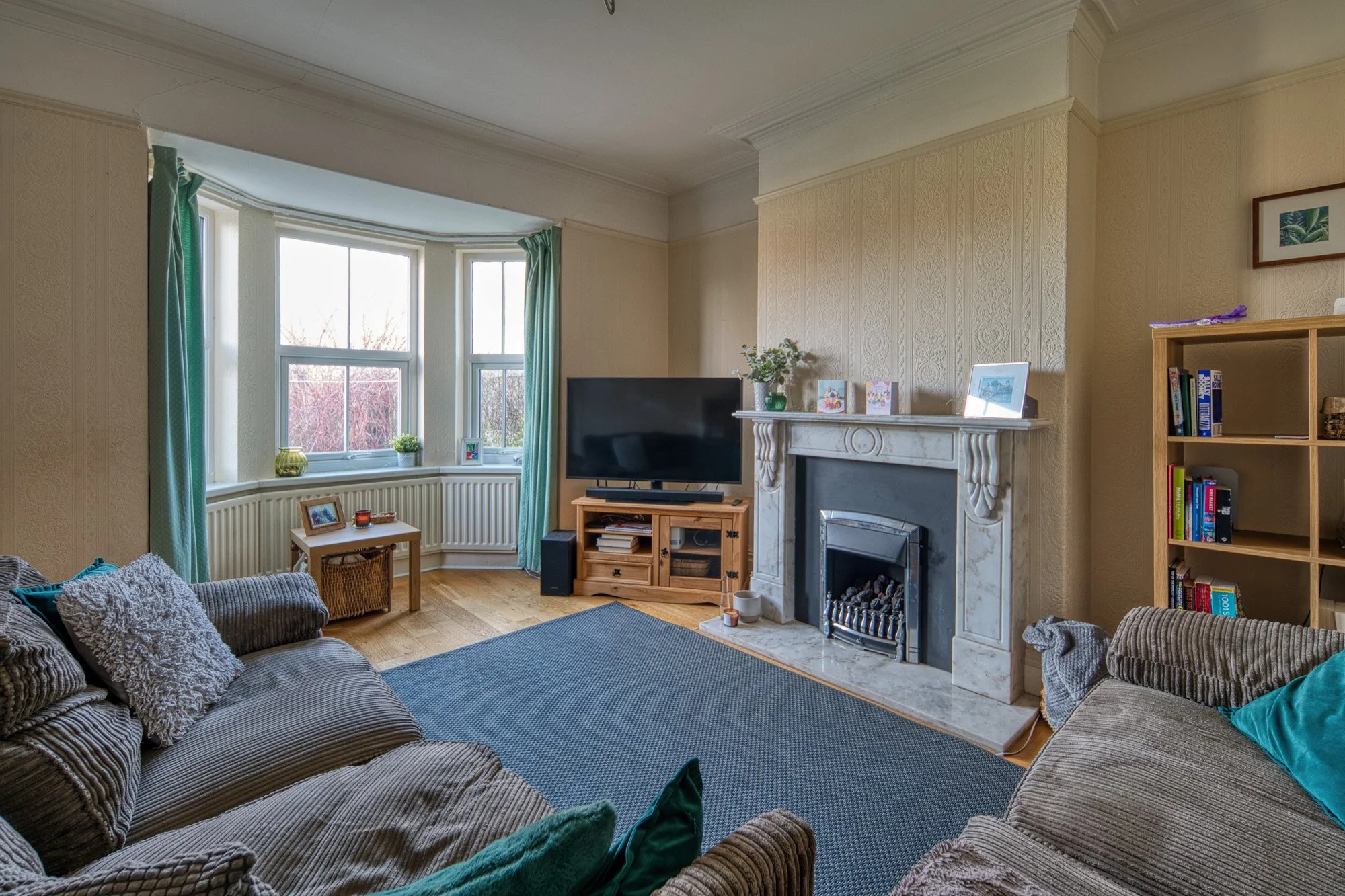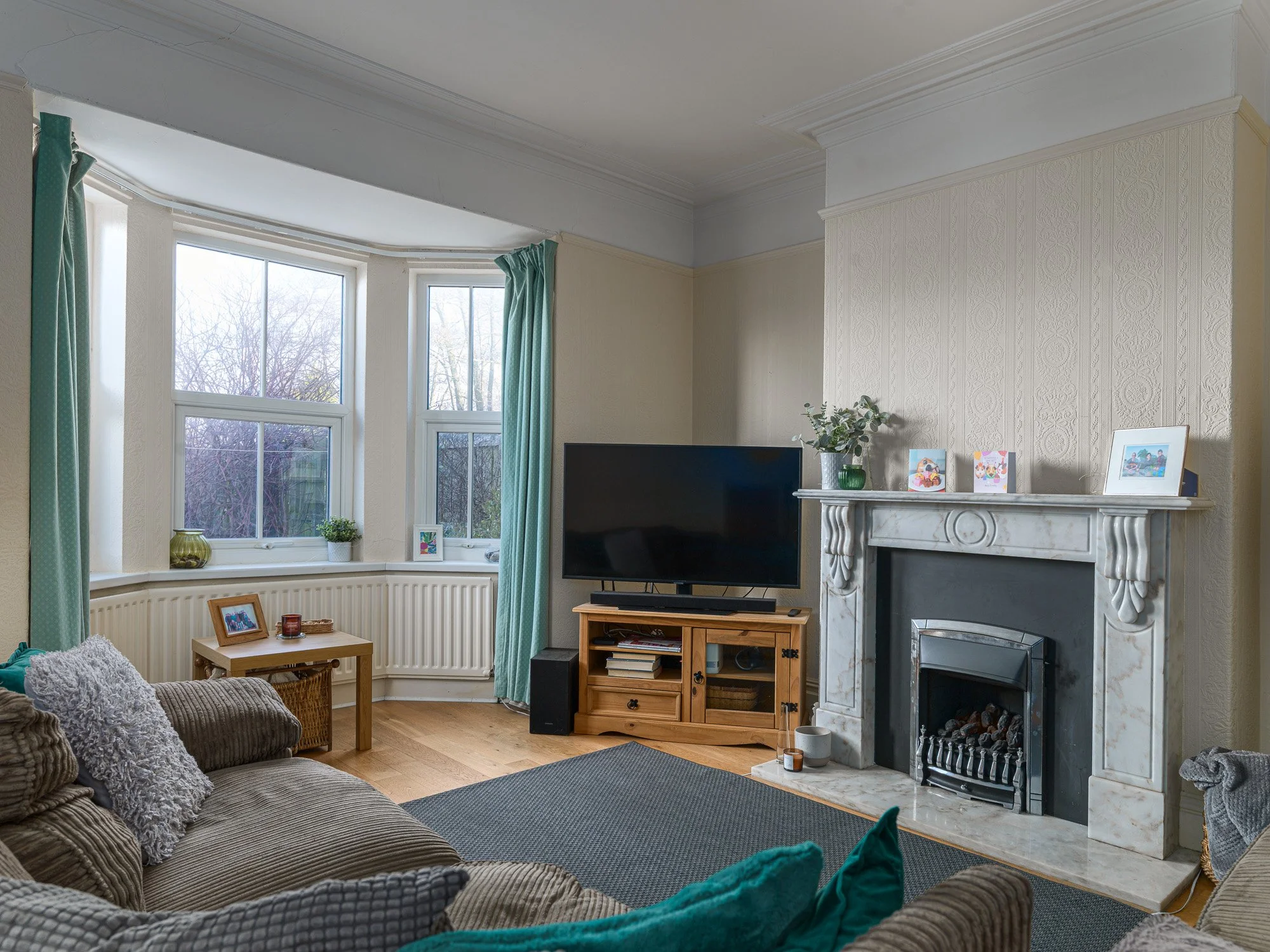Changing things
My working practices aren’t set in stone, and my efforts to either improve or speed things up are an ongoing thing. Saving ten minutes on-site or in front of a computer can add up to hours every week.
There are basically two ways of shooting real estate work in the real world - HDR, and “flambient”.
The former involves firing off a number of frames at different exposures, and then relying on software to blend them together in order to output a final frame which captures all tones from light to dark. (High Dynamic Range).The latter involves shooting a natural light frame (ambient) which should reflect the scene as the human eye would roughly percieve it, then another frame (or multiple frames) using daylight balanced flash to illuminate the whole area and capture accurate colour throughout the room. These separate images using flash and ambient (hence the “flambient”) are then blended manually to give a result with accurate colour and realistic light quality.
I have always favoured the flambient method of capture, as the HDR technique usually results in muddy looking interiors without contrast or accurate colour - especially if there is mixed lighting going on. I’ve used HDR on occasions - usually when shooting empty, expansive office spaces which can’t be lit using flash - and it’s done the job admirably. The HDR software I used to employ was called Photomatix, and it wasn’t great to be honest. I now have a copy of the excellent Luminar Neo software which is an AI powered (yeah, yeah) app that can do all sorts of other powerful things like image enlargement, de-noising and so on. Here are the final images of my living room using both methods of capture - HDR on top. The difference in colour is noticeable when the images are displayed next to each other.
Most of my current jobs involve pretty run of the mill houses and apartments without great window views. They don’t command high fees, and certainly don’t require a great deal of special treatment in terms of interior lighting, so I started experimenting with single shot captures. This means that the raw file can be imported into Adobe Lightroom, given a quick tweak using a saved preset, and quickly straightened/cropped/exported without any other editing. This does mean that I’ve had to develop a new way of shooting that involves a bit of compromise.
I fix the aperture to f8 as usual, ISO to 320, then set the exposure using the shutter speed which slightly blows out the window highlights but allows natural light to come into the room to give a natural look. The interior lights need to be switched off (that’s the main compromise) as they’re impossible to control and introduce horrible colour casts. I then bounce my flash from the ceiling behind the camera to introduce light to the darkest part of the scene and create an accurate (ish) colour rendition throughout. It works best in smaller rooms, and the colour isn’t as crisp as when using flambient, but for basic real estate work it produces more than satisfactory results, and means I can shoot a regular 3 bed house in about 20 minutes, with an edit-time of around the same. The same scene using that method is shown below. What do you reckon? The colour isn’t as rich as the flambient exposure, but in basic properties, especially the more run-down places, you wouldn’t be able to tell the difference.
I’m still tinkering with the technique to try and standardise the settings, and it doesn’t work all the time, but I’m getting there.
As an extra bonus, below is a flambient shot done using my medium format equipment. A totally different beast in all respects - a tighter view, but much more subtle colouring and better range of tones. I look forward to some serious testing under commercial conditions shortly. This was shot with the 28mm lens without the tilt/shift adapter - giving a 20mm focal length equivalent on a 35mm sensor.



